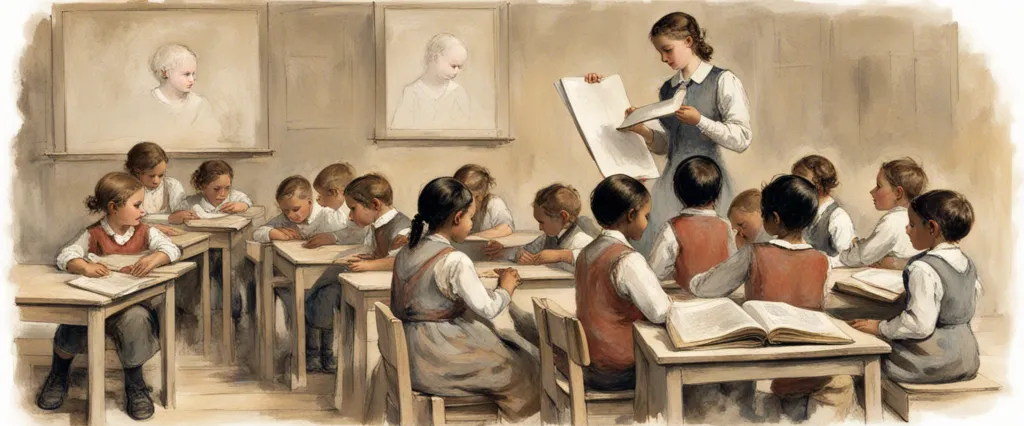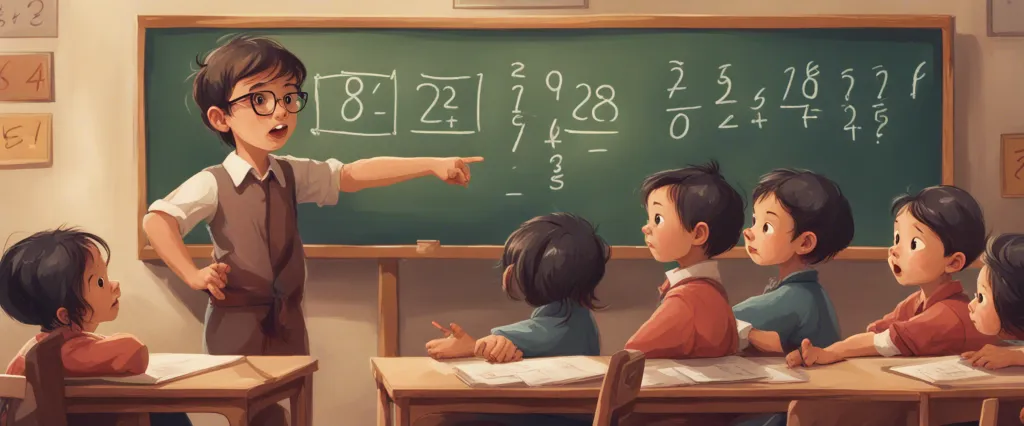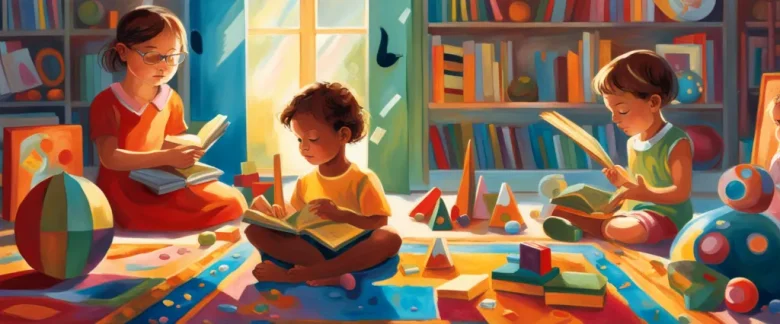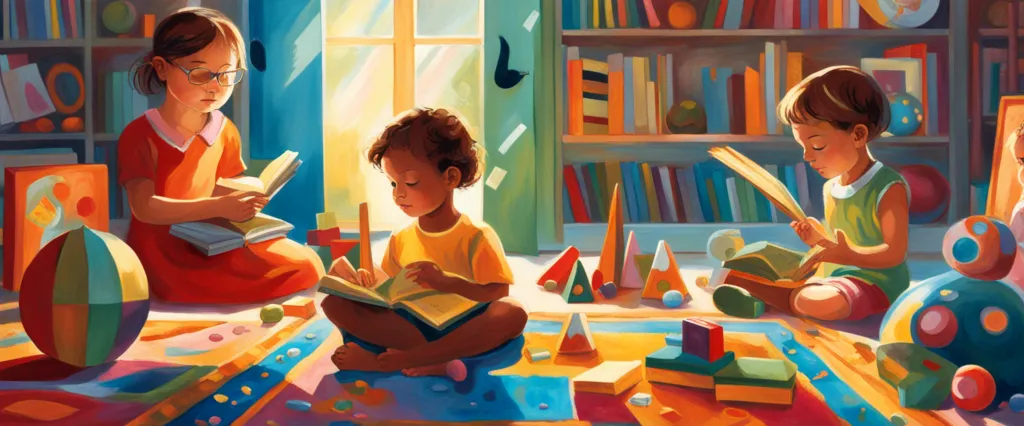In “How Children Learn,” John C. Holt explores the fundamental principles of education by challenging traditional educational methodologies and advocating for a child-centered approach. By observing and engaging with children, Holt uncovers the inherent curiosity and natural ability to learn that children possess, questioning the need for formal education systems to guide their development. John Caldwell Holt (1923-1985) was an American educator and author known for his influential views on education. With a background in teaching and experiencing firsthand the limitations of traditional schooling, Holt sought to inspire changes in the way society perceives and supports children’s learning processes. Through his books and lectures, he advocated for a more child-centered and holistic approach, empowering children to take charge of their education and discovering the joy of learning. How Children Learn” is a groundbreaking work that challenges conventional paradigms and encourages educators and parents alike to reevaluate their roles in a child’s educational journey.
Chapter 1: The Curiosity of Children
Chapter 1 of “How Children Learn” by John C. Holt is titled “The Curiosity of Children,” where the author explores how children possess innate curiosity and an enduring desire to learn. Holt begins by recounting various encounters he had with children who displayed remarkable curiosity and a natural inclination to explore the world around them.
Holt emphasizes that children are not empty vessels waiting to be filled with knowledge, but rather active learners who are constantly seeking to understand their surroundings. He asserts that this innate curiosity is often hindered by traditional educational systems that prioritize rote memorization and conformity over genuine learning experiences.
The author challenges the conventional notion that learning is something that is done to children, rather than something they actively participate in. He suggests that children have their own unique learning styles and rhythms, and too often these are not accommodated within the classroom setting.
Holt argues that it is vital for educators and parents to embrace children’s curiosity and provide them with opportunities to explore their interests freely. He encourages adults to actively listen and observe children, allowing them to guide their own learning experiences. By doing so, children can develop a deeper understanding and retain information more effectively.
In conclusion, Chapter 1 of “How Children Learn” highlights the importance of recognizing and nurturing the innate curiosity of children. It challenges traditional educational practices and encourages a shift towards a more child-centered approach that supports and encourages children’s natural desire to learn.
Chapter 2: Self-Directed Learning
Chapter 2 of “How Children Learn” by John C. Holt explores the concept of self-directed learning in children. The author emphasizes the idea that children are natural learners who possess an innate curiosity and desire to explore and understand the world around them. Holt argues that this innate drive for learning is hindered by traditional schooling methods that prioritize obedience, conformity, and dependence on authority.
Holt suggests that children learn best when they are allowed to direct their own learning, pursuing their interests and passions. He observes that young children engage in a constant process of experimentation and discovery as they actively explore their environment. This self-directed learning is characterized by a deep absorption in activities that engage their attention and provide a sense of purpose and meaning.
Moreover, Holt highlights the importance of play in self-directed learning. He believes that play allows children to make their own decisions and take risks, fostering creativity, problem-solving skills, and confidence. Through play, children develop their abilities to think critically, adapt to new situations, and communicate effectively.
The author also addresses the role of adults in supporting self-directed learning. Instead of assuming the position of a strict teacher or an authoritative figure, adults can act as facilitators, providing guidance and resources to assist children in their learning endeavors. They can respect children’s autonomy and encourage their exploration and independence, nurturing their natural love for learning.
In summary, Chapter 2 of “How Children Learn” emphasizes the importance of self-directed learning in children. It encourages adults to recognize and nurture children’s natural curiosity and drive for learning. By valuing play, providing guidance, and fostering independence, adults can empower children to become active and passionate learners.
Chapter 3: Play and Learning
Chapter 3 of “How Children Learn” by John C. Holt explores the important role of play in a child’s learning journey. Holt emphasizes that children have a natural inclination to play and that play is an essential part of their learning process.
The chapter begins with Holt describing how children actively engage in play, constantly exploring and experimenting with their surroundings. He observes that children’s play is not just a way to pass the time but rather a form of focused and purposeful activity through which they explore and make sense of the world around them.
Holt highlights that play provides a fertile ground for learning, as it allows children to take risks, make mistakes, and learn from their experiences. Through play, children develop important cognitive and physical skills, as well as social and emotional intelligence. Play acts as a vehicle for their imagination and creativity, enabling them to construct their own understanding of the world and their place in it.
Furthermore, Holt emphasizes that play should not be undervalued or overshadowed by formal institutionalized education. He argues that traditional schooling often suppresses children’s natural play instincts through regimented curricula, standardized testing, and adult-imposed rules. This robs children of the freedom and autonomy that play provides, hindering their learning potential.
In conclusion, Chapter 3 of “How Children Learn” highlights the critical role of play in a child’s learning. Holt encourages educators and parents to recognize play as an integral part of a child’s development rather than something separate from or opposed to learning. By embracing and encouraging play, children can cultivate a love for learning, develop essential skills, and truly understand the world around them.
Chapter 4: The Social Nature of Learning

Chapter 4 of “How Children Learn” by John C. Holt delves into the social nature of learning and highlights the importance of social interactions in a child’s education. Holt emphasizes the role of relationships and the community in shaping a child’s learning experience.
Holt begins by discussing the significance of children’s interactions and engagements with their surroundings. He argues that children learn best when they are actively involved and invested in the learning process. He suggests that children’s natural curiosity and desire to understand the world around them can be nurtured through positive social interactions.
The author explores the concept of “mutual delight” in learning, asserting that both the teacher and the student should find joy in the learning experience. He believes that learning should not be transactional but rather a joyful and collaborative endeavor. Children should have the freedom to explore and share their thoughts and ideas without fear of judgment or criticism.
Holt further stresses the importance of relationships in a child’s learning journey. He argues that children learn best in environments where they feel safe, respected, and valued by their teachers and peers. This promotes a sense of belonging and encourages active engagement in the learning process.
The chapter also explores the idea of learning through imitation. Holt observes that children constantly observe and imitate the actions and behaviors of others. He believes that this type of learning is crucial and can be enhanced when children are surrounded by positive role models and mentors.
In summary, Chapter 4 of “How Children Learn” highlights the significance of social interactions and relationships in a child’s education. The author emphasizes the need for joyful and collaborative learning environments, where children feel empowered to explore, express themselves, and learn from and with others.
Chapter 5: The Learning Environment
Chapter 5 of “How Children Learn” by John C. Holt explores the concept and dynamics of the learning environment. Holt emphasizes that children are constantly learning, even when not in a traditional school setting. He argues that the most effective learning environments allow children to explore freely and engage with the world around them.
In this chapter, Holt discusses the importance of providing children with a stimulating, diverse, and safe environment that can facilitate their natural curiosity and desire to learn. He encourages parents and educators to create an environment where children can explore a wide variety of materials, resources, and experiences. Holt believes that by allowing children to navigate their surroundings independently, they can develop crucial problem-solving skills and self-confidence.
Furthermore, Holt highlights the significance of an emotionally supportive learning environment. He suggests that children learn best when they feel secure and valued. He encourages adults to provide constructive feedback, encouragement, and emotional support to help children overcome challenges and build resilience.
Holt also addresses the role of technology and its impact on the learning environment. He argues that while technology can be a valuable tool, it should not replace hands-on experiences or discourage children from exploring their physical surroundings. He advises parents and educators to strike a balance between using technology to supplement learning and ensuring that real-life experiences remain a vital part of a child’s education.
Overall, Chapter 5 underscores the importance of creating a rich and supportive learning environment that allows children to explore, question, and engage actively with the world. Holt challenges the conventional notion of a classroom and encourages adults to cultivate an environment that nurtures a child’s natural love for learning.
Chapter 6: The Diversity of Learning
Chapter 6 of the book “How Children Learn” by John C. Holt, titled “The Diversity of Learning,” explores the varied ways in which children learn and highlights the importance of recognizing and appreciating their unique learning styles and preferences. Holt argues against the notion that learning happens only in a structured and formal school setting, stating that children are constantly learning from their environment and experiences.
Holt begins by discussing how children have a natural curiosity and desire to explore the world around them. They are not born as empty vessels waiting to be filled with knowledge, but rather active participants in their own learning process. He emphasizes the significance of allowing children the freedom to pursue their interests and passions, as this is where deep and meaningful learning occurs.
The author also challenges the notion of intelligence being measured solely through traditional academic success. He highlights the diverse ways in which children exhibit intelligence, such as through creativity, problem-solving, and practical skills. Holt suggests that intelligence should be viewed as a multifaceted concept, and that a narrow focus on academic achievement may limit children’s true potential.
Furthermore, Holt emphasizes the importance of recognizing and embracing different learning styles. Not all children learn in the same way, and it is crucial to cater to their individual needs. He argues that a one-size-fits-all approach to education is ineffective and unfair, as it fails to acknowledge and appreciate the unique strengths and abilities of each child.
In conclusion, Chapter 6 of “How Children Learn” highlights the significance of respecting and nurturing children’s individuality in the learning process. Holt encourages parents and educators to provide opportunities for children to explore their interests, expand their knowledge, and embrace their diverse ways of learning.
Chapter 7: The Continuity of Learning
Chapter 7: The Continuity of Learning of the book How Children Learn by John C. Holt discusses the importance of recognizing and nurturing the natural curiosity and innate ability of children to learn. Holt emphasizes that learning is a continuous and lifelong process that should not be confined to the classroom or limited to specific subjects.
The chapter begins with Holt recounting his experiences with young children who exhibited an inquisitive nature and a natural drive to explore the world around them. He argues that this innate curiosity, which propels children to constantly question and seek answers, should be encouraged and nurtured rather than stifled or contained within academic boundaries.
Holt emphasizes that children learn not just from textbooks and prescribed lessons, but from their everyday experiences, interactions, and observations. He highlights the importance of allowing children the freedom to explore their interests and passions, rather than forcing them to conform to standardized curricula. Holt argues that the most effective learning occurs when children have the opportunity to engage with real-life experiences, hands-on activities, and self-directed exploration.
Furthermore, Holt challenges the traditional notion of intelligence being solely measured through academic achievement. He argues that intelligence is multi-faceted and diverse, and that children should be given the freedom to develop and showcase their individual strengths and talents.
To support his arguments, Holt presents numerous anecdotes of children who thrive outside of conventional academic structures, instead excelling in their chosen fields and interests. He advocates for a shift in the education system to better align with the way children naturally learn and urges parents and educators to foster a love of learning rather than merely focus on test scores and academic achievements.
In summary, Chapter 7 of How Children Learn highlights the importance of recognizing the continuity of learning throughout a child’s life. Holt compellingly argues that education should not be confined to the classroom but should embrace a child’s inherent curiosity and provide them with opportunities to explore, discover, and learn from the world around them.

Chapter 8: The Freedom to Learn
Chapter 8 of “How Children Learn” by John C. Holt, titled “The Freedom to Learn,” delves into the importance of providing children with opportunities for self-directed learning and autonomy in their education.
Holt starts by emphasizing the limitations of formal education systems, which he believes restrict children’s innate desire to learn and explore the world around them. He argues that true learning occurs when individuals are motivated by their own curiosity and interests rather than external rewards or punishments.
According to Holt, the freedom to learn must be a fundamental right granted to all children, rather than a privilege reserved for the elite. He suggests that children have an inherent eagerness and ability to learn, and that their ability to pursue their interests and make choices is crucial for their development.
The author highlights numerous examples of how children actively learn when given the freedom to do so. He describes instances where children taught themselves complex skills, such as reading or writing, simply by observing and engaging in their environment. Holt believes that it is essential to trust children’s innate capacities and provide them with the opportunity to learn at their own pace and in their own way.
Holt also discusses the role of play in a child’s learning process. He emphasizes the importance of play as a crucial component of children’s education, where they can explore, experiment, and make sense of the world around them. Play, according to Holt, allows children to develop their problem-solving, creativity, and social skills in a natural and meaningful way.
In conclusion, Chapter 8 of “How Children Learn” advocates for a more child-centered approach to education, where the freedom to learn and explore is encouraged. Holt argues that children are not passive recipients but active learners, and that their natural curiosity and desire for knowledge should be nurtured through autonomy and play.
After Reading
In conclusion, “How Children Learn” by John C. Holt provides valuable insights into the natural learning process of children and challenges conventional educational systems. Holt emphasizes the importance of allowing children to explore and discover their own interests, highlighting how traditional schooling often stifles creativity and curiosity. Through numerous anecdotes and observations, Holt argues that children possess an innate desire for knowledge and that learning should be self-directed rather than imposed upon them. This thought-provoking book serves as a powerful reminder that children learn best when given the freedom to pursue their own passions and make sense of the world around them.
1. “Mind in the Making: The Seven Essential Life Skills Every Child Needs” by Ellen Galinsky – This book explores the importance of developing essential life skills in children, such as focus and self-control, perspective-taking, and communication, to help them succeed in an ever-changing world.
2. The Whole-Brain Child: 12 Revolutionary Strategies to Nurture Your Child’s Developing Mind” by Daniel J. Siegel and Tina Payne Bryson – This book delves into the latest brain research and provides practical strategies for parents to promote healthy brain development in their children, including ways to enhance emotional intelligence.
3. “The Gardener and the Carpenter: What the New Science of Child Development Tells Us About the Relationship Between Parents and Children” by Alison Gopnik – Drawing on decades of research, this book challenges the notion of being a “parenting expert” and encourages a more mindful and flexible approach to nurturing children’s growth, emphasizing the power of relationships and play.
4. “NurtureShock: New Thinking About Children” by Po Bronson and Ashley Merryman – Through exploring groundbreaking studies and debunking traditional parenting myths, this book sheds light on various aspects of child development, such as intelligence, sibling relationships, and self-control, offering fresh perspectives and practical implications for parents and educators.
5. “Free to Learn: Why Unleashing the Instinct to Play Will Make Our Children Happier, More Self-Reliant, and Better Students for Life” by Peter Gray – Examining the importance of play and self-directed learning, this book argues against the conventional educational system and presents compelling evidence on how children learn best when given autonomy, authenticity, and opportunities for exploration.




